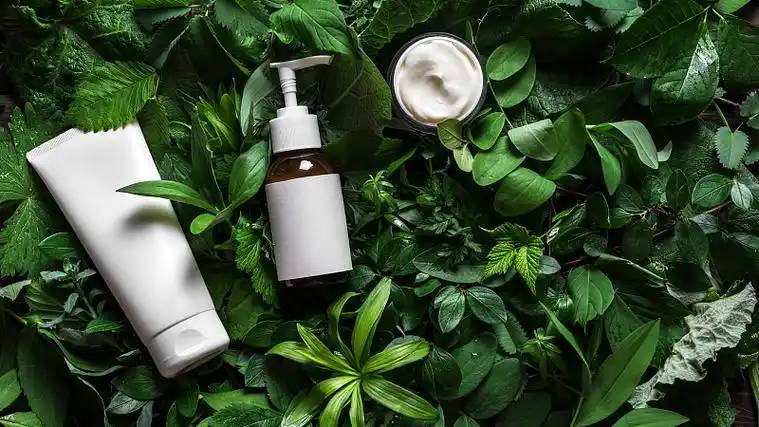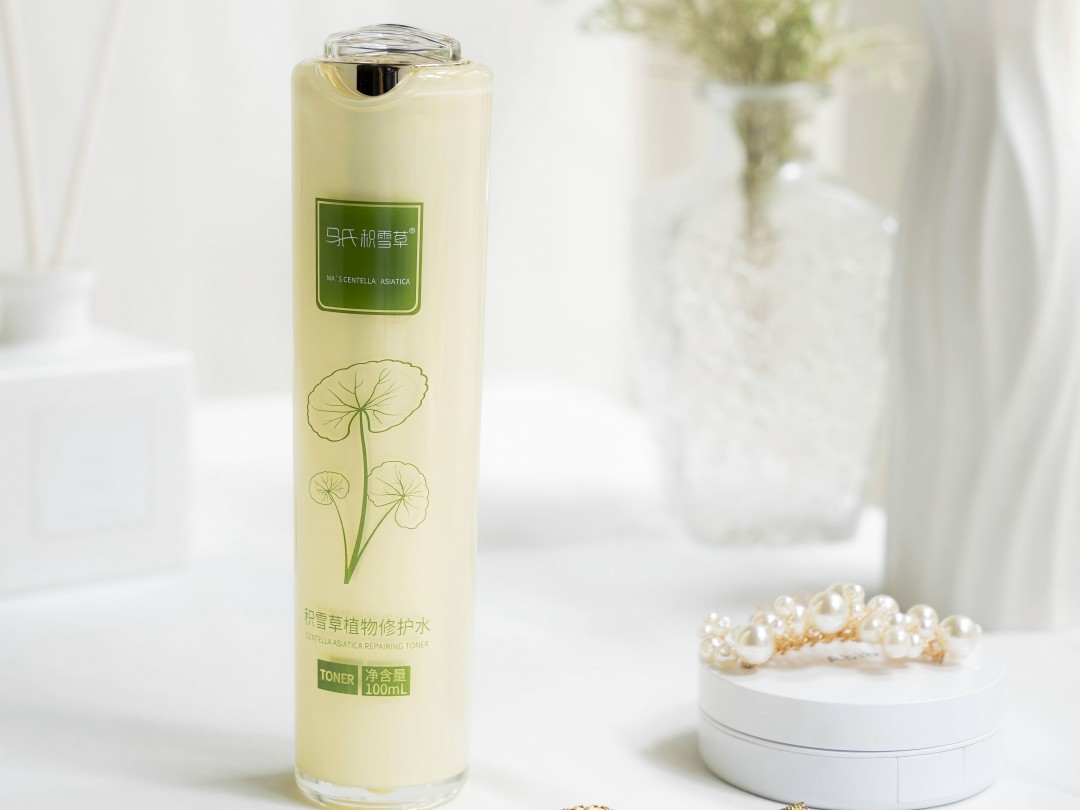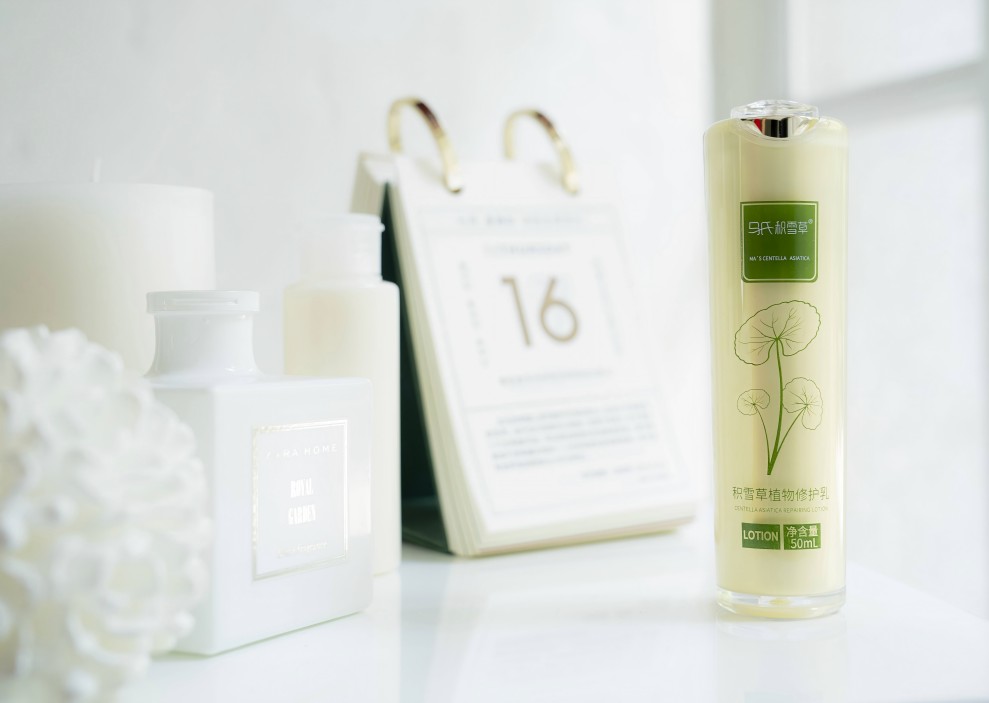Study on Centella Asiatica Use
Centella asiatica (L) Urban is a plant in the family Apiaceae. It is a perennial herb, and the dried whole herb is used in medicine. It is cold in nature, bitter and pungent in taste; it has the effects of clearing away heat and dampness, reducing swelling and removing toxins, activating blood circulation and resolving blood stasis, and inducing diuresis. It is mainly used for treating abdominal pain caused by wind-heat, diarrhea caused by summerheat, dysentery, damp-heat jaundice, swelling and toxin caused by boil and abscess, and bruise and injury. It is clinically used for treating infectious hepatitis, epidemic cerebrospinal meningitis, and acute glomerulonephritis. Modern pharmacological studies have shown that it also has anticancer, antidepressant, and gastrointestinal and cardioprotective effects. The latest research on its ingredients and pharmacological effects at home and abroad is summarized as follows:
1 Chemical composition
1.1 Triterpenoids
Triterpenoids are the main active ingredients in Centella asiatica, and are divided into two categories: one is the α-amyrin-type triterpenoid saponins, mainly including asiaticoside, thankuniside, isothankuniside, madecassoside, brahmoside, brahminoside, etc.; the other is the α-amyrin-type triterpenoid acids, mainly including asiatic acid, Madasiatic acid, Brahmic acid, Brahminoside, Centic acid, Centoic acid, Cenellic acid, Indocentoic acid, etc.[1]. The content of triterpenoids in Centella asiatica varies greatly with the place of origin and the harvest season.
1.2 Volatile oil components
Centella asiatica has a strong aromatic scent and contains a variety of volatile oil components. As many as 45 types have been separated and identified using a gas chromatography-mass spectrometry instrument in China. The higher content exceeds 3%, including caryophyllene, farnesol, 3,7,11-tri-methyl-(E,E)-2,6,10-dodecatrien-1-ol-3-eicosyne, Elemene, 1-heptadecanol, longifolene, copaene, 1,2,4α,5,6, 8α-octahydro-4,7-dimethyl-1-(1-methylethyl)-naphthalene, etc. [2].
1.3 Other ingredients
Centella asiatica is rich in trace elements such as Mn, Fe, Cu, Zn, Sr, Co, and Cr, which are essential for the human body [3], as well as flavonoids such as quercetin, kaempferol, glucose, and rhamnose glycosides [1]. Centella asiatica also contains meso-inositol, centellose, tetraterpenoids (mainly carotenoids), chlorophyll, vanillic acid, amino acids, etc. [1].
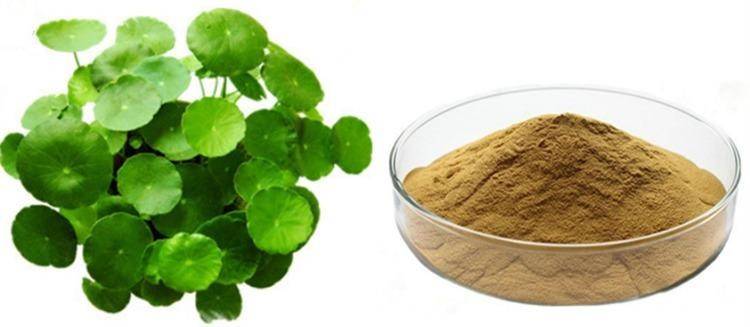
In recent years, many other ingredients have been discovered in Centella asiatica, such as β-sitosterol, behenyl octanoate, kaempferol, quercetin, carotenoids, vanillic acid, butyric acid, terminolic acid, asiaticoside, asiatic acid-B, ferulic acid, bayogenin, 3β-β-23-trihydroxyolean-12-en-28-oic acid, 3β-6β-23-trihydroxyurs-12-en-28-oic acid, D-gulonic acid [4], centellin, asiaticin, centellici-n [5]. Centella asiatica monosaccharide and α-L-rhamnose were recently isolated from Centella asiatica for the first time [6].
2 Pharmacological activity
2.1 Effects on the nervous system
Qin Leping and others isolated 45 volatile oil components from Centella asiatica and measured their activity by testing their effects on the eyelid droop and body temperature drop caused by reserpine in rats and the longest duration of immobility caused by stimulation of the mouse cornea. The results showed that Centella asiatica volatile oil has a significant antagonistic effect on the eyelid droop and body temperature decrease caused by reserpine in rats, and can significantly shorten the maximum duration of immobility caused by stimulation of the mouse cornea, indicating that Centella asiatica volatile oil has an anti-experimental depressive effect [2].
In addition, Centella asiatica can also enhance neurological function. Its ethanol extract (0·1g/ml) can significantly promote the growth of human SH-SY5Y cell synapses in the presence of nerve growth factor. Madecassoside can accelerate the recovery of damaged neurons by reducing the recovery time and promoting axonal regeneration in SD rats. 7] Gadahad MR studied the effects of Centella asiatica leaf extract on mature rat hippocampal CA3 neurons and found that Centella asiatica extract can significantly promote neuronal growth. 8] In a randomized, double-blind experiment, in which 28 elderly volunteers took Centella asiatica extract every day. After 2 months, the volunteers' cognitive abilities and mood regulation abilities were measured. The results showed that Centella asiatica extract can slow down the age-related cognitive decline and mood regulation decline in healthy elderly people. However, its mechanism of action still needs to be further studied [9].
2.2 Effect on the cardiovascular system
MC has a significant preventive and protective effect on myocardial ischemia-reperfusion injury. Li Guigui et al. used a rabbit myocardial ischemia-reperfusion injury (MIRI) model, in which hydroxy asiaticoside (MC) was intravenously infused before ischemia, and electrocardiograms, electrocardiogram, hemodynamics and other indicators at multiple time points; calculated the myocardial infarction area using quantitative histochemical staining; detected enzyme activity and MDA content in the serum; determined the content of C-reactive protein (CRP) in the serum by ELISA; detected myocardial cell apoptosis by TUNEL method; and detected the apoptosis-related protein Bcl-2 by SP method. The results showed that pre-administration of MC can significantly reduce the area of left ventricular and global myocardial infarction, It also has a certain effect on improving the electrocardiogram, significantly improving cardiac function, and reducing the elevation of LDH and CK. MC can also significantly reduce the elevation of CRP; increase SOD enzyme activity while reducing MDA content; and significantly inhibit myocardial cell apoptosis caused by MIRI, upregulating Bcl-2 expression [10,11].
2.3 Gastrointestinal protective effect
Centella asiatica extract can significantly reduce ethanol-induced gastric mucosal damage, reduce vascular permeability, and protect the gastric mucosa. Centella asiatica decoction 60g (raw medicine) /kg and 30g (raw medicine) /kg administered to the duodenum can inhibit pyloric ligation ulcers and stress ulcers in rats, respectively. Chen Baowen et al. [12] used Centella asiatica extract to study the mechanism of its gastroprotective effect and found that 4 hours after pyloric ligation in rats, the amount of gastric juice secretion, gastric juice acidity and gastric acid secretion tended to increase rather than decrease, proving that the protective effect did not work by inhibiting gastric acid secretion. Centella asiatica extract at 100–800 μg/ml can increase cell survival rate in a dose-dependent manner, suggesting that Centella asiatica extract has a direct protective effect on gastric mucosal cells in vitro, and this effect may be one of the mechanisms by which Centella asiatica extract prevents damage to gastric mucosal cells.
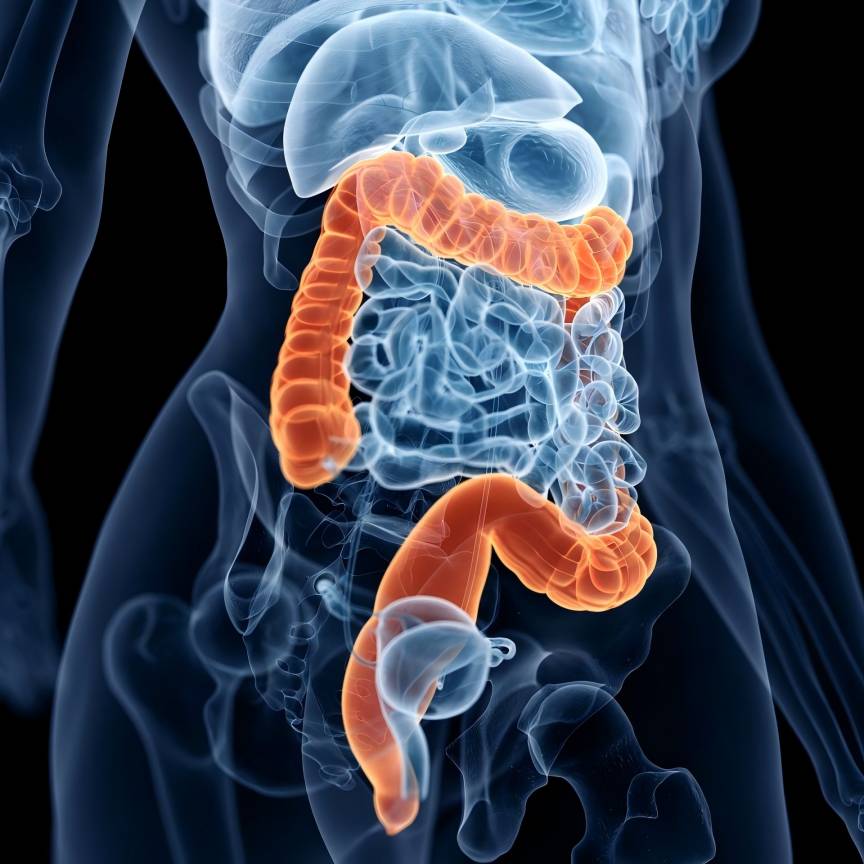
The results of the gastric motility study showed that the administration of 10 g (herbal medicine)/kg of Centella asiatica decoction to the duodenum inhibited in vivo gastric motility in rats. In vitro experiments showed that Centella asiatica extract also inhibited gastric motility in isolated rat stomachs.
2.4 Cytotoxic and anti-tumor effects
Centella asiatica extract can induce apoptosis in tumor cells and show synergistic effects with vincristine, and may be used as a biochemical regulator in tumor chemotherapy. The IC50 of centella asiatica extract on KB, KBv200, MCF-7 and MCF-7/ADM cells is (1·11±0·13), (1·82±0·08), (1·58±0·15) mg/ml and (3·25±0·46) mg/ml, respectively, and KBv200 and MCF-7/ADM cells showed similar drug sensitivity to the corresponding parent cells. The KB cells treated with asiaticoside showed characteristic changes in apoptotic cells. The combination of asiaticoside and vincristine had a significant synergistic effect on a variety of tumor cells. The apoptosis rate of KB cells in the combined drug group and the level of Bcl-2 protein phosphorylation were significantly higher than those in the single drug group, and only the activated caspase-3 protein was detected in the combined group. The percentage of KB cells blocked in the S-G2/M phase and the expression level of Cyclin Bl protein in the group combining asiaticoside and vincristine were higher than those in the group using the drug alone, while the expression of P34cdc2 protein was slightly reduced, indicating that asiaticoside can enhance the anti-tumor effect of vincristine [13].
2.5 Antibacterial effect
Centella asiatica has good antibacterial activity both in vivo and in vitro. Zhang Shenghua et al. used the double dilution method in plates to determine the in vitro antibacterial activity of asiaticoside against standard strains and pathogenic strains isolated from clinical sources; and used a mouse model of bladder ascending renal infection to study the in vivo efficacy of asiaticoside's antibacterial effect. The results showed that asiaticoside showed antibacterial activity against 37 standard and clinical isolates, especially against various drug-resistant bacteria, including methicillin-resistant Staphylococcus aureus (MRSA), methicillin-resistant Staphylococcus epidermidis (MRSE), resistant to five aminoglycoside antibiotics, and enterococcus faecium that produces inactivating enzymes, and extended-spectrum β-lactamase-producing Escherichia coli, Klebsiella pneumoniae and Acinetobacter calcoaceticus, as well as piperacillin-resistant Pseudomonas aeruginosa, all have strong antibacterial activity. Centella asiatica saponin has a strong antibacterial effect on the clearance of Escherichia coli 26, which causes ascending urinary tract infection in mice, with an ED50 of 1·87 g/kg [1. 4] indicates that centella asiatica saponin has an inhibitory effect on infections caused by gram-negative bacteria.
Studies have also shown that asiaticoside inhibits inflammatory factors such as NO, TNF-α and IL-6 [15,16]. In a study of the effect of asiaticoside on the release of cytokines by LPS-induced RAW 264∙7 cells in mice, the results showed that asiaticoside inhibited the release of the pro-inflammatory cytokines TNF-α and IL-6 induced by LPS in RAW 264∙7 cells. This provides a basis for whether asiaticoside also has a protective effect against LPS-induced sepsis in mice and whether it can be used in the treatment of clinical sepsis. Whether asiaticoside has an effect on other inflammatory factors induced by LPS, such as COX-2 and the inflammatory inhibitory factor IL-10, has yet to be confirmed by further experiments [17].
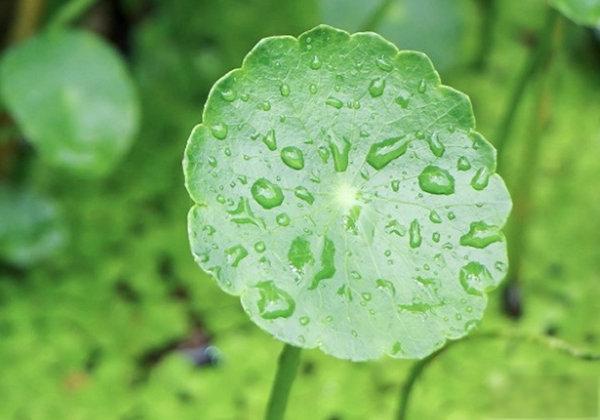
2.6 Effect on fibroblasts
Centella asiatica extract can effectively promote wound healing and has obvious curative effects on fibrotic diseases such as burn scars and scleroderma.
Xie Julin et al. found that after researching the effects of asiaticoside on fibroblasts cultured in vitro, the proliferation of fibroblasts became inactive, their ability to synthesize and secrete proteins was reduced, and there were changes in the mitochondria. These changes had a certain effect on the function of fibroblasts in synthesizing collagen. After administration, the DNA synthesis of fibroblasts decreased, and their growth was inhibited. This indicates that Centella asiatica extract can inhibit the division and proliferation of fibroblasts and has a significant inhibitory effect on the synthesis of collagen protein by fibroblasts [18,19].
Modern pharmacological studies have shown that Centella asiatica and its main active ingredients can inhibit the proliferation of fibroblasts, reduce the excessive proliferation of ECM and fibrous components by reducing the activity of transaminase and the content of acid mucopolysaccharides and collagen. Pan Shu and others used flow cytometry analysis, immunocytochemistry and Western blot techniques combined with densitometric scanning analysis to observe the effects of asiaticoside on the cell cycle of scar fibroblasts and the changes in phosphorylated Smad 2 and Smad 7, and to explore the mechanism of asiaticoside in the treatment of scars. The results showed that asiaticoside mainly inhibited the pathological effects of TGF2B by increasing the expression of Smad 2 transduction signal Smad 7, which blocked the proliferation of fibroblasts and played a role. Asiaticoside had little effect on the cell cycle and did not cause apoptosis. The effect of asiaticoside on Smad3 needs to be further studied [20].
Qi Shaohai et al. explored the mechanism of Centella asiatica saponin on burn keloid through in vitro scar fibroblasts and animal models of keloid transplantation in nude mice. The results showed that after administration, the number of scar epidermal cells, fibroblasts, and collagen fibers decreased, the rough endoplasmic reticulum of fibroblasts was significantly loose and the number decreased, with exocytosis, mitochondria expanded or vacuolated, and some fibroblasts showed signs of apoptosis such as chromatin edge conglomerates or dense chromatin in the nucleus, increased cytoplasmic density but intact cell membrane. There were fewer macrophages and mast cells, and the blood vessels in the stroma were occluded and the number of them decreased. The results showed that Centella asiatica extract (asiatin) exerts its effect by blocking the growth and proliferation of fibroblasts and inhibiting their ability to synthesize and secrete collagen [21].
Suzhou et al. compared the use of medicine in 102 patients with facial lesions after laser surgery and concluded that the wound healing time and wound area scores of patients using asiaticoside cream were better than those of the control group, and there was a significant difference [22]. Yoshiyu- ki et al. found through research on its mechanism of action that low doses of asiaticoside (10 pg/ml to 100 ng/ml) can increase the levels of monocyte chemotactic protein-1 (MCP-1), vascular endothelial growth factor (VEGF), and interleukin (IL)-1β. Asiaticoside (10 pg/ml to 100 ng/ml) can promote the production of MCP-1 by HaCaT cells, but has no direct effect on the production of VEGF. It can also promote the production of IL-1β by THP-1 macrophages carrying MCP-1, but has no similar effect on macrophages without MCP-1 or carrying lipopolysaccharide. These studies suggest that the mechanism of Centella asiatica's therapeutic effect on burns may be to increase the expression of MCP-1 in keratinocytes, thereby promoting the production of VEGF. At the same time, asiaticoside promotes the production of IL-1β by macrophages carrying MCP-1, thereby enhancing angiogenesis at the burn site [23].
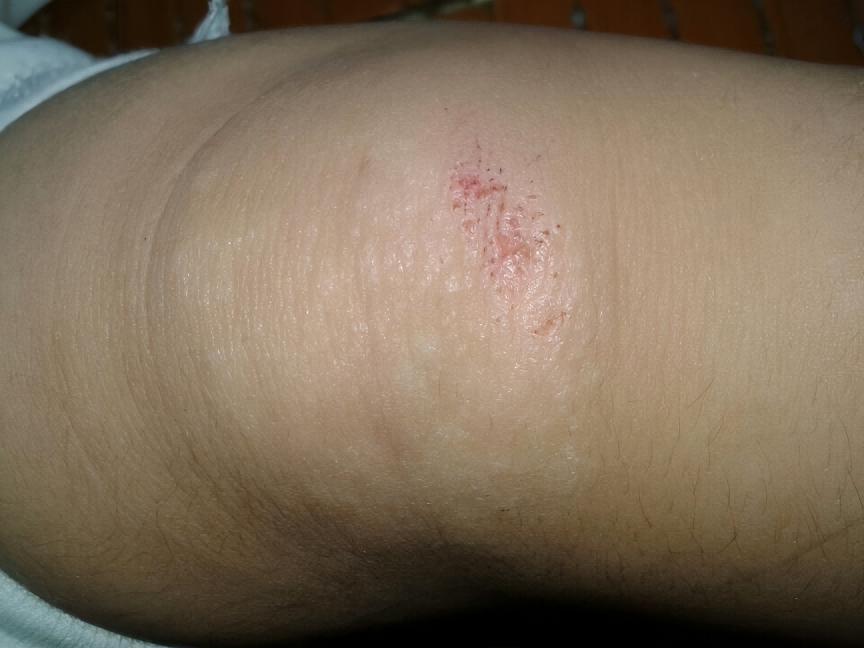
2.7 Other effects
Madecassoside can inhibit LPS-induced hyperalgesia and reduce the sensitivity of mice to painful stimuli, with a significant analgesic effect. The effect is most pronounced in the 40 mg·kg-1 group. Hydroxycentella asiatica saponin inhibited the expression of myeloperoxidase (MPO) in mouse brain tissue and the levels of plasma TNF-α and IL-6 in a dose-dependent manner. It is speculated that its effect is related to the inhibition of TNF-α and IL-6 expression, and may produce a synergistic effect by inhibiting MPO, which is involved in inflammation [24].
Studies have confirmed that asiaticoside has a protective effect on LPS-induced acute lung injury (ALI). Each dose group of asiaticoside showed a dose-dependent decrease in IL-6 and TNF-2α levels in the LPS-induced acute lung injury model (BALF), and an increase in IL-10 expression. This protective effect is related to the maintenance of a balance between inflammatory factors by asiaticoside. Further research is needed to determine the specific pathways affected [25].
A study of the effect of Centella asiatica granules (CTA) on the expression of connective tissue growth factor (CTGF) in the kidney tissue of rats with unilateral ureteral obstruction (UUO) showed that The high-dose CTA group had significantly better renal tubular interstitial fibrosis than the UUO group. Immunohistochemical SP and RT-PCR assays showed that CTA down-regulated CTGF expression. The high-dose CTA group had better CTGF expression suppression than the medium- and low-dose groups (P<0.01), indicating a clear dose-dependent relationship between the biological effect of CTGF expression suppression. This indicates that CTA can reduce renal tubular interstitial fibrosis by antagonizing CTGF expression, thereby delaying renal failure [26].
Progestins are often used in contraceptive pills, but they have a certain degree of teratogenic and carcinogenic properties. Siddique YH studied the synergistic effect of progestins and Centella asiatica extract. The experiment used chromosomal mutations and sister chromatid exchanges as indicators to study the effects of four different concentrations of Centella asiatica extract (1∙075 × 10-4, 2∙125 × 10 4, 3∙15× 10 4 and 4∙17× 10 4 g/ml, concentration in culture medium) on the cytotoxicity of 20 mM and 30 mM progesterone in isolated lymphocytes. The results showed that Centella asiatica extract reduced the toxicity of progesterone in a concentration-dependent manner [27].
2.8 Toxic side effects
In mice and rabbits, subcutaneous injection of 0.04–0.05 g/kg asiaticoside can produce toxic symptoms; 0.2–0.25 g/kg can increase bleeding time and cause bleeding. Oral administration of 1 g/kg asiaticoside was tolerated by mice and rabbits. Jorge OA et al. found that long-term administration of asiaticoside to three women (ages 61, 52, and 49 years old) caused liver damage after 30, 20, and 60 days, respectively. After discontinuation and recovery, liver damage reappeared after administration of asiaticoside again [28]. Chitturi S et al. [29] also showed that Centella asiatica has a certain degree of hepatotoxicity, and this toxicity is related to its triterpenoid components.
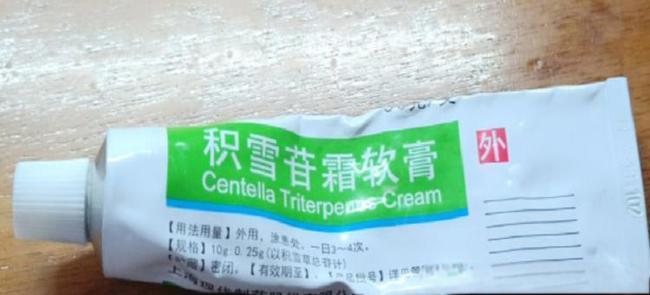
The miraculous pharmacological effects of Centella asiatica have attracted widespread attention from domestic scholars. However, the main components of Centella asiatica that exert pharmacological effects are pentacyclic triterpenoid compounds such as asiaticoside and madecassoside, and like other traditional Chinese medicines, the content is relatively low. In recent years, some new methods of cultivating centella asiatica have emerged to increase the content of its main ingredients. After experimenting with various growth-promoting factors, Kim OT et al. found that only methyl jasmonate and yeast extract are conducive to the formation of asiaticoside, and that the formation of asiaticoside reaches a maximum when the concentration of methyl jasmonate is 0∙1 mM. Using the hairy root culture technique to study Centella asiatica, the results showed that methyl jasmonate promoted the synthesis of asiaticoside [30,31]. Active cultivation, effective separation of ingredients, and in-depth pharmacological activity research can more reasonably develop and utilize Centella asiatica.
References
[1] He Mingfang, Meng Zhengmu, Wo Lianqun. Research on the chemical composition of Centella asiatica [J] ∙ Journal of China Pharmaceutical University, 2000, 31 (2): 91-93 ∙
[2] Qin Luping, Ding Ruxian, Zhang Weidong, et al ∙ Analysis of the volatile oil components of Centella asiatica and research on its antidepressant effect [J] ∙ Journal of the Second Military Medical University, 1998, 19 (2): 186-187 ∙
[3] Wang Xuezhao, Yu Yanling, Chen Yao, et al. Comparative study of trace elements in Centella asiatica from different origins [J]. Guangdong Trace Element Science, 2000, 7(1): 41-43.
[4] Yu Quanlin, Gao Wenyuan, Zhang Yanwen, et al. Study on the chemical composition of Centella asiatica [J]. Chinese Journal of Chinese Materia Medica, 2007, 32 (12): 1182-1184.
[5] Siddiqui BS, Aslam H, Ali ST, et al. Chemical constituents of Centella asiatica. J Asian Nat Prod Res, 2007, 9(3-5): 407-414.
[6] Liu Yu, Zhao Yuqing ∙ Study on the chemical composition of Centella asiatica [J] ∙ Chinese Modern Traditional Chinese Medicine, 2008, 10 (3): 7-9.
[7] Soumyanath A, Zhong YP, Gold SA, et al. Centella asiatica accelerates nerve regeneration upon oral administration and contains multiple active fractions increasing neurite elongation in vitro [J]. J Pharm Pharmacol, 2005, 57(9): 1221-1229.
[8]Gadahad MR ,Rao M ,Rao G ∙Enhancement of hippocampal CA3neuro- nal dendritic arborization by Centella asiatica(Linn)fresh leaf extract treatment in adult rats[J]∙J Chin Med Assoc ,2008,71(1):6-13∙
[9]Wattanathorn J ,Mator L ,Muchimapura S ,et al ∙Positive modulation of cognition and mood in the healthy elderly volunteer following the administration of Centella asiatica[J]∙J Ethnopharmacol ,2008,116(2):325-332∙
[10] Li GG, Bian GX, Ren JP, et al. Protective effect of madecassoside on myocardial ischemia-reperfusion injury in rabbits. [J]. Acta Pharmacologica Sinica, 2007, 42(5): 475-480.
[11] Bian GX, Li GG, Yang Y. Madecassoside reduces ischemia reperfusion injury on regional ischemia induced heart infarction in rat [J]. Biol Pharm Bull. 2008, 31(3): 458-463.
[12] Chen Baowen, Ji Baoan, Zhang Xuezhi, et al. Protective effect of Centella asiatica extract on gastric mucosa and its mechanism [J]. Chinese Journal of Digestion, 1999, 19(4): 246-248.
[13] Huang Yunhong, Zhang Shenghua, Zhen Ruixian, et al. Inducing apoptosis of tumor cells and enhancing the anti-tumor effect of vincristine by asiaticoside [J]. Cancer, 2004, 23(12): 1599-1604.
[14] Zhang Shenghua, Yu Lanxiang, Zhen Ruixian, et al. Antibacterial effects of asiaticoside and its therapeutic effects on experimental urinary tract infections [J]. Chinese Journal of New Drugs, 2006, 15(20): 1746-1749.
[15] Guo JS, Cheng CL, Koo MW ∙ Inhibitory effects of Centella asiatica water extract and asiaticoside on inducible nitric oxide synthase during gastric ulcer healing in rats [J] ∙ Planta Med, 2004, 70 (12): 1150-1154.
[16] Zarbock A, Schmolke M, Spieker T, et al. Acute uremia but not renal inflammation attenuates aseptic acute lung injury: a critical role for uremic neutrophils [J]. J Am Soc Nephrol, 2006, 17(11): 3124-3131.
[17] Jiang Xian, Zhang Zhuo, Li Xiaobing, et al. Effects of asiaticoside on inflammatory factors in RAW264.7 cells stimulated by LPS [J]. Pharmacology and Clinical of Traditional Chinese Medicine, 2008, 24(1): 23-25.
[18] Wang Ruiguo, Wang Jinju, Yu Xiangbin, et al. Effects of asiaticoside on DNA synthesis and collagen synthesis in fibroblasts [J]. Journal of Fujian College of Traditional Chinese Medicine, 2001, 11(2): 41-42.
[19] Xie Julin, Li Tianzeng, Qi Shaohai, et al. ∙ Effects of asiaticoside on cultured fibroblasts in vitro [J] ∙ Journal of Sun Yat-sen University, 2001, 22 (1): 41-43, 47 ∙
[20] Pan Shu, Li Tianzeng, Li Yeyang, et al. Effects of asiaticoside on proliferation of proliferative scar fibroblasts and Smad signaling pathway. Chinese Journal of Plastic and Reconstructive Surgery, 2004, 18(4): 291-294.
[21] Qi Shaohai, Xie Julin, Li Tianzeng, et al. Experimental study on the effect of asiaticoside on hypertrophic scars after burns [J]. Chinese Journal of Burns, 2000, 16(1): 53-56.
[22] Suzhou, Qin Fang, Dong Ziying ∙ Report on the treatment of 51 cases of facial lesions after laser surgery with asiaticoside cream [J] ∙ Shandong Medicine, 2005, 45 (16): 34.
[23]Yoshiyuki Kimura, Maho Sumiyoshi, Kei ichi Samukawa, et al ∙Facilitat - ing action of asiaticoside at low doses on burn wound repair and its mechanism[J]∙ Eur J Pharmacol ,2008.584(2-3):415-423.
[24] Tang Dachun, Zhang Zhuo, Li Wanping, et al. Research on the effect of asiaticoside on the pain sensitivity of mice caused by LPS [J]. Journal of Luzhou Medical College, 2008, 31 (1): 25-28.
[25] Zhang Zhuo, Qin Dailian, Wan Jingyuan ∙ Effects of asiaticoside on the balance of inflammatory factors in mice with acute lung injury induced by LPS [J] ∙ Chinese Materia Medica, 31 (4): 547-549.
[26] Zhang Zhu, Zhao Li, Wang Bin ∙ Effects of Centella asiatica granules on the expression of connective tissue growth factor in the kidney tissue of rats with unilateral ureteral ligation [J] ∙ Chinese Journal of Integrated Traditional and Western Medicine Nephropathy, 2008, 9 (2): 118-121.
[27] Siddique YH, Ara G, Beg T, Faisal M, et al. Antigenotoxic role of Centella asiatica L extract against cyproterone acetate induced genotoxic damage in cultured human lymphocytes [J]. Toxicol In Vitro, 2008, 22(1): 10-17.
[28] Jorge OA, Jorge AD. Hepatotoxicity associated with the ingestion of Centella asiatica [J]. Rev Esp Enferm Dig, 2005, 97(2): 115-124
[29] Chitturi S, Farrell GC. Hepatotoxic slimming aids and other herbal hepatotoxins. J Gastroenterol Hepatol. 2008;23(3):366-373.
[30] Kim OT, Kim MY, Hong MH, et al. Stimulation of asiaticoside accumulation in the whole plant cultures of Centella asiatica (L. Urban) by elicitors. Plant Cell Rep. 2004;23(5):339–344.
[31] Kim OT, Bang KH, Shin YS, et al. Enhanced production of asiaticoside from hairy root cultures of Centella asiatica (L ∙) Urban elicited by methyl jasmonate [J]. Plant Cell Rep, 2007, 26(11): 1941-1949.


 English
English French
French Spanish
Spanish Russian
Russian Korean
Korean Japanese
Japanese